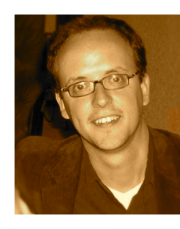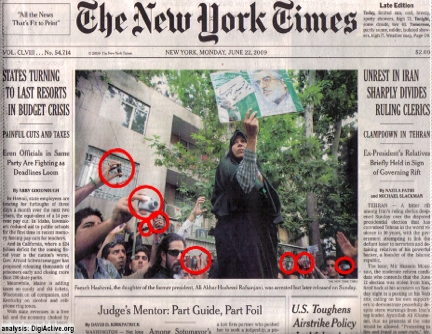
Theorizing Ushahidi: An Academic Treatise
[This is an excerpt taken from Chapter 1 of my dissertation]
Activists are not only turning to social media to document unfolding events, they are increasingly mapping these events for the world to bear witness. We’ve seen this happen in Tunisia, Egypt, Libya, Syria, Yemen and beyond. My colleague Alexey Sidorenko describes this new phenomenon as a “mapping reflex.” When student activists from Khartoum got in touch earlier this year, they specifically asked for a map, one that would display their pro-democracy protests and the government crackdown. Why? They wanted the world to see that the Arab Spring extended to the Sudan.
The Ushahidi platform is increasingly used to map information generated by crowds in near-real time like the picture depicted above. Why is this important? Because live public maps can help synchronize shared awareness, an important catalyzing factor of social movements, according to Jürgen Habermas. Recall Habermas’s treaties that “those who take on the tools of open expression become a public, and the presence of a synchronized public increasingly constrains un-democratic rulers while expanding the right of that public.”
Sophisticated political maps have been around for hundreds of years. But the maps of yesteryear, like the books of old, were created and controlled by the few. While history used to be written by the victors, today, journalists like my colleague Anand Giridharadas from the New York Times are asking whether the triangulated crisis map will become the new first draft of history. In the field of geography and cartography, some refer to this new wave of democratized map-making as “neo-geography.” But this new type of geography is not only radically different from traditional approaches because it is user-generated and more par-ticipatory; the fact that today’s dynamic maps can also be updated and shared in near real-time opens up an entire new world of possibilities and responses.
Having a real time map is almost as good as having your own helicopter. A live map provides immediate situational awareness, a third dimension and additional perspective on events unfolding in time and space. Moreover, creating a map catalyzes conversations between activists, raises questions about geographic patterns or new incidents, and leads to more questions regarding the status quo in a repressive environment. To be sure, mass media alone does not change people’s minds. Recall that political change is a two-step process, with the second—social step—being where political opinions are formed (Katz and Lazarsfeld 1955). “This is the step in which the Internet in general, and social media in particular, can make a difference” (Shirky 2010). In addition, the collaboration that takes place when creating a live map can also reinforce weak and strong ties, both of which are important are important for civil resistance.
The Ushahidi platform enables a form of live-mapped “sousveillance,” which refers to the recording of an activity using portable personal technologies. In many respects, however, the use of Ushahidi goes beyond sousveillance in that it generates the possibility of “dataveillance” and a possible reversal of Bentham’s panopticon. “With postmodernity, the panopticon has been informationalized; what once was organized around hierarchical observation is now organized through decoding and recoding of information” (Lyon 2006). In Seeing Like a State, James Scott argues eloquently that this process of decoding and recoding was for centuries the sole privilege of the State. In contrast, the Ushahidi platform provides a participatory digital canvas for the public decoding, recoding of information and synchronization of said information. In other words, the platform serves to democratize dataveillance by crowdsourcing what was once the exclusive realm of the “security-informational complex.”
In Domination and the Arts of Resistance: Hidden Transcripts published in 1990, James Scott distinguishes between public and hidden transcripts. The former describes the open, public interactions that take place between domina-tors and oppressed while hidden transcripts relate to the critique of power that “goes on offstage” and which the power elites cannot decode. This hidden transcript is comprised of the second step, social conversations, that Katz and Lazarsfeld (1955) argue ultimately change political behavior. Scott writes that when the oppressed classes publicize this “hidden transcript”, they become conscious of its common status. Borrowing from Habermas, the oppressed thereby become a public and more importantly a synchronized public. In many ways, the Ushahidi platform is a vehicle by which the hidden transcript is collectively published and used to create share awareness—thereby threatening to alter the balance of power between the oppressors and oppressed.
The new dynamics that are enabled by “liberation technologies” like Ushahidi may enable a different form of democracy, one which arising from “the inability of electoral/representative politics to keep it promises [has thus] led to the development of indirect forms of democracy” (Rosanvallon 2008). More specifically, Rosanvallon indentifies three channels whereby civil society can hold the state accountable not just during elections but also between elections and independent of their results. “The first refers to the various means whereby citizens (or, more accurately, organizations of citizens) are able to monitor and publicize the behavior of elected and appointed rulers; the second to their capacity to mobilize resistance to specific policies, either before or after they have been selected; the third to the trend toward ‘juridification’ of politics [cf. dataveillance] when individuals or social groups use the courts and, especially, jury trials to bring delinquent politicians to judgment” (Schmitter 2008, PDF).
These three phases correspond surprisingly well with the three waves of Ushahidi uses witnessed over the past three years. The first wave was reactive and documentary focused. The second was more pro-active and focused on action beyond documentation while the third seeks to capitalize on the first two to complete the rebalancing of power. Perhaps this final wave is the teleological purpose of the Ushahidi platform or What Technology Wants as per Kevin Kelly’s treatise. However, this third wave, the trend toward the “juridificaiton” of democracy bolstered by crowdsourced evidence that is live-mapped on a public Ushahidi platform, is today more a timid ripple than a tsunami of change reversing the all-seeing “panopticon”. A considerable amount of learning-by-doing remains to be done by those who wish to use the Ushahidi platform for impact beyond the first two phases of Rosanvallon’s democracy.




